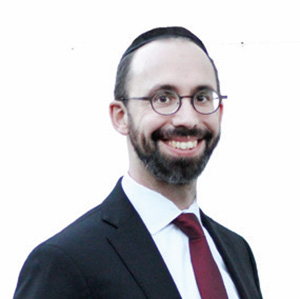
One can’t help but wonder what is so significant about the number seven that Hashem makes it so relevant to cycles of time: the seven-day week, the seven-year Shemita cycle (leaving the land fallow), and then the 7×7 cycles of the Yovel and the Omer. Rav Shamshon Rafael Hirsch, zt”l, points out that most units of time are connected to a physical cycle. Night and day are based on the rotation of the earth. A year is the cycle of the earth moving around the sun. A month is based on the rotation of the moon around the earth. A week has no physical reality of its own but is special solely because of Shabbos, the seventh day, since Hashem rested on that day. By keeping Shabbos, we are physically testifying that Hashem created the world.
We find this is true also when we think about the Shemita (seventh) year, “Veshavsa ha’aretz Shabbos laHashem”—the land shall rest a resting for Hashem (Behar 25:2). Rashi explains that this resting proclaims Hashem as the Creator of the world just as Shabbos does, for the unit of time—seven—is solely connected to the creation of the world.
It’s no coincidence that the period of the Omer is structured in the exact same model: sheva Shabasos—seven weeks consisting of seven days each. At the culmination of the Omer we have a special celebration: Shavuos. So let’s examine the progression of the Omer. The start of the Omer period is marked with bringing the first harvest of barley to the Temple as a Mincha offering. On Shavuos we have a different grain offering, from the first harvest of wheat. The Slonimer Rav, zt”l, in Nesivos Shalom explains the Torah is teaching us the focus of this period. The Gemara labels barley as animal food, and wheat—bread—as human food. The focus of the Omer period is to develop ourselves and refine our character. We start off base and unrefined, similar to an animal, but are expected to grow daily and develop our human characteristics. The goal is to transform ourselves from being an instinct-ruled being to a human being who controls his instincts.
When commanding us to count the Omer, the Torah says, “Vesafarta lecha.” Rav Dessler, zt”l, explains this means the counting is lecha, to you, because the Omer is a period of self-development. The Torah calls the Mincha offering of wheat that is brought on Shavuos a “Mincha chadasha, a new offering.” What is its newness? This refers to our transforming ourselves into a new, enhanced creation during the Omer period.
The Omer is a microcosm of our life; we need a plan to give us focus over these 49 days, to be prepared to take full advantage of the transcendent 50th day. When we wake up it’s not just another day, nor are our weekends mundane; rather, they represent steps in a cycle: every week is a unit of its own. Living in this reference helps us structure and plan accordingly. We must ask ourselves what we want to accomplish this week, each week, and what do I want to accomplish by the end of this seven-week segment of my life. You plan the areas where you want to grow, such as refining specific character traits, building or deepening relationships and increasing accomplishments in Torah study. We must utilize the Omer to manifest in all our actions that we are Hashem’s chosen beings.
We are a tzelem Elokim, an image of Hashem. When one meets a gadol (a Torah giant)—and if you’ve met with one, you will know how true this is—the most striking thing is not his incredible Torah knowledge, fear of Heaven or even his love and concern for others. Yes, he has all three of these incredible traits, but the most striking thing you notice is the glow of a perfected human being. Perfecting ourselves is our job, our goal…and it’s attainable! It’s a lifelong mission that takes constant work; it’s a daily job. Each morning when we wake up we should know that it’s our mission to perfect ourselves. We say Modeh Ani for this opportunity each morning. Try it immediately—make a plan and work at it for one week. The week will not be seven days; rather, you will see that it becomes a single unit. Add one unit to the next, growing and succeeding in the process. The complete human, the one who develops his good characteristics and works on controlling his bad ones, is the greatest testimony of Hashem.
By Rabbi Baruch Bodenheim
Rabbi Baruch Bodenheim is the associate rosh yeshiva of Passaic Torah Institute (PTI)/Yeshiva Ner Boruch. PTI has attracted people from all over northern New Jersey, including Teaneck, Bergenfield, Paramus, Rockaway and Fair Lawn. He initiated and continues to lead a full, multi-level Gemara learning program in the evenings, gives Halacha and hashkafa shiurim on Shabbos and, more recently, has spread out beyond PTI to begin a weekly Beis Midrash program with in-depth chavrusa learning in Livingston, Springfield, Fort Lee and Jersey City, New Jersey. His email is rb@ptiweb.org.










